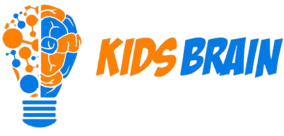
There have been a number of posts, discussions, and forums for psychologists recently regarding ADHD in the age of COVID-19. Specifically, the question is, “How do we clearly determine whether a child has ADHD under these circumstances?” Many children across the US, and the world, continue to receive their educational instruction in a virtual environment. As much effort as teachers have put in to creating an interactive and thoughtful virtual classroom environment, it is just not the same as an in-class experience. The hard part is that it is also NOT developmentally appropriate for children to be expected to use the higher order skills needed to organize, plan, switch gears, and limit distraction in the way that virtual learning environments demand.
Among the patients at Kids BRAIN, most parents of elementary school children describe concerns regarding their child’s struggles with sitting in the same place for class, remining focused on the screen for lessons, and difficulties with distraction, motivation, and boredom. This is not entirely unexpected. In a normal classroom, an elementary child may receive a lesson for 15 to 20 minutes, but it is while watching a teacher move around the room, seek out input from students, draw or provide visuals on an overhead/Smartboard (or something similar), and be able to engage “attention capturing” classroom management techniques like gaining proximity (getting closer to a child who looks disconnected), making direct and reciprocal eye contact (looking at you kid!), and using individualized hand signals and other nonverbal gestures (raising an eyebrow, tapping a page on the desk, touching an ear to show that it is time to listen) that have the ability to draw in a child so that they remain engaged and learning. Those things are eliminated in a virtual environment. Instead, you may get an 80 minute block of class time or asynchronous learning where a child has a to-do list and is expected to complete them all on their own. This is going to take more than 15 to 20 minutes. This leaves the burden on the child and their caregivers to continuously press for engagement in an inherently “passive” system and to keep working well past normal attention spans. The inability to sit still, short attention span, distractibility, and avoidance of long cognitive tasks are all criterion for ADHD diagnosis. There are also perfectly normal when the learning environment is set up in this way. The structure and cues that the child brain needs to be ABLE to do these things are missing. This is essentially asking a child’s brain to act like and adult brain, which is just not possible or realistic. So, this makes it very, very difficult from a diagnosis standpoint.
The other inherent difference in a live classroom is that it is NOT home. Humans establish their habits from cues in the environment. The strongest teachers have the ability to create a classroom and instructional routines that “funnel” children through the steps and sequences of their day with very little thought needed (when it is done well). This is accomplished early in a school year and is then supported by clues and triggers in the environment that are linked to little habits needed throughout the day, like where you sit, how you turn in school work, where you put your belongings, where you get a pencil when you can’t find yours, and where you look on the board to see what homework for the day is. When a child is learning virtually, all of these cues and triggers are gone. Instead, they are doing their thinking and learning in a setting that is used for something different. Consider, if a child is plugged in to a virtual session in their room, then they are seeing their bed, toys, posters, clothes, and other kid stuff scattered around. These objects have their own set of cues and triggers, but they aren’t “school.” They are linked to after school and weekend habits like sleeping, playing, running around, and hanging out with friends. Seeing and being in the presence of these cues and triggers will impact a child’s behaviors. “When I’m on my bed I am either asleep, watching a show, or reading a book” is the brain signal, but now we are trying to force a new behavior, “When I am on my bed I watch the screen and my teacher, keep notes, and remain alert for 45 minutes.” These messages are true opposites. Are we then surprised to find that these children are more off-task than they would be in class? I’m not. The ENVIRONMENT of the classroom and the role of the TEACHER are essentials to helping the brain understand and execute a huge number of learning skills. It’s virtually (pun intended) impossible to create the same thing at home. So, do we then say that a child has a deficit in attention, when the whole arrangement is inherently distracting and counter-intuitive?
The middle school and high school student have the harder proposition in my opinion. Younger students are often more “self-contained.” They have a primary teacher and a common set of expectations across the virtual environment. They may have a daily agenda that spans all classes and work, with a specific central place to go to find videos, worksheets, forms, articles, etc. to support the lesson. Older students have a different set of expectations. They have multiple teachers and courses, each with their own virtual classroom set up. The student is responsible for juggling a mind-boggling array of tech demands, like calendars, digital textbooks, log ins for various websites, and 15 clicks to get to the homework today. For instance, even if all teachers are supposed to be using the same virtual classroom suite (not naming names on purpose), some may place a weekly agenda on the first page for their course (the student then has to look at each separate course and remember which they looked at already), other teachers may have no agenda at all, and others may post tests and quizzes only to a completely separate calendar. To meet the daily expectations of a virtual classroom that attempts to engage through a variety of tasks, this may mean teachers assigning reading a chapter in a digital book (which the student may have to locate, or click and log in, which takes you someplace new), answering questions in an online form (which you may or may not be able to get a copy of later), submitting through three different steps (open, complete, save file in a way that you can find it later, share, post, or submit a copy), and then opening one calendar to find out what today’s homework is, but another one to even notice that there is a test over this content next Wednesday. I am pretty organized in general, but most adults would be daunted (if not rendered completely hopeless) by this much complexity in their to-do list. And this is for one hypothetical class. Imagine compounding this by 5 or 6 or 7 courses, all with different teachers, varying teacher expectations, and differences in materials management. Again, I ask you if not being able to do these things without support (or a lot of support, or at all) is unexpected. I suggest, as a neuropsychological trained professional that understands that the most complex parts of our brain functions (specifically the ones that manage time, materials, planning, organization, and emotional/motivational) are often still developing until you get closer to 24 or 25 years old, that it would be somewhat miraculous if they COULD.
So, maybe parents and other caregivers can help bridge the gap. Parents with children learning virtually are often also trying to get their jobs done at the same time. This has the potential to leave children working “independently” through a screen while parents are scrambling to work in a meeting, call, time to work on a report or presentation, or are caring for younger children and household responsibilities when class is in session. Research suggests that many parents (often mothers) have had to resort to dropping out of the work force in order to supervise and assist their children who are now home. But, being present in the home is not the same as a teacher being with you on their classroom “turf” structuring, supporting, watching, and teaching. The process of virtual learning means an expectation of almost osmotic learning, or the process of “soaking up” information just by being there when it was shared. Osmosis is not how learning is supposed to work. It is an active, structured, continuous process, not the one that happens in the background while your child is distracted by a notification on their tablet or computer, listening to their little sister fuss about her upcoming nap, looking around and planning for the activities that will happen when this class is over, or while watching a YouTube video off to the side of their virtual session.
We still want to help these kids, because they (and their parents) are clearly struggling. However, now might not be the right time for considering a diagnosis of some sort. Instead, it is likely to be more helpful to consult with your local educational psychologist to discuss how you can structure things at home, communicate with teachers, and set up reasonable expectations for your online learner. The process of forcing virtual learning (by choice, because of health and safety risk, because of your school, all of the above) has revealed struggles in almost all children. I would suggest that what we are seeing is what a child (with a not-adult brain) looks like when thrown to the proverbial wolves. Some will adapt and survive. Those are the brains that are built to self-structure. Most will struggle and need support. Those are the brains that can learn a new structure but it takes some time. Others will fail to make the needed transition to this format, which is a reflection of the demands being a mismatch to what an 8, 10, 12, or 16 year old brain can do. It is still growing, changing, learning, and self-structuring. There are ways to help in the short-term, which may be excellent ways to support growth and development of long-term life skills (organization, planning, time management, etc.). But, some of this may just be something we need to suffer through until we can get these kids back into a safe and structured classroom, where teachers can use their magic to build a cocoon of habits, cues, triggers, and guidance to allow true, effective learning to happen most easily.




